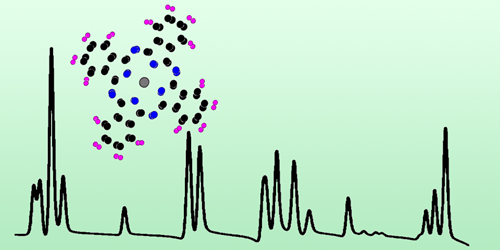Superconductors Give STM a Boost
By replacing the conducting materials normally used in scanning tunneling microscopes (STMs) with superconducting ones, researchers show that they can boost the microscope’s spectroscopic signals by up to a factor of 50 [1]. The advance could enable researchers to measure a significant fraction of the spectrum of vibrational modes of a single molecule, improving understanding of how molecules and their bonds respond to perturbations.
The demonstration relies on a quantum-mechanical effect known as inelastic tunneling, in which an electron crosses a “forbidden” region as it tunnels between two electrodes, arriving with more or with less energy than it started with. This energy change is caused by an excitation of the electron—for example, from the vibrations of a single molecule—and can be detected as a change in the system’s conductance.
Previously, the conductance change from the vibration of a single molecule was too small for an STM to routinely pick up many modes. Alexander Weismann at Christian-Albrecht University of Kiel, Germany, and his colleagues boost molecular-vibration signals by replacing with superconductors the materials making up the STM tip and the substrate on which the molecule sits. They find that the sharp, intense spectral features exhibited by superconductors containing magnetic impurities can amplify any tunneling current change, allowing it to be detected much more easily. The team used the technique to detect 46 vibrational modes of a lead phthalocyanine molecule.
The finding was serendipitous, says Weismann. The team was using an STM with a superconducting substrate to detect molecular spin when they saw something odd in the conductance spectra. Rather than a single tunneling peak, the spectra exhibited multiple well-defined peaks that were perfectly reproducible in repeat experiments. “We had to look into it,” Weismann says.
–Katherine Wright
Katherine Wright is the Deputy Editor of Physics Magazine.
References
- J. Homberg et al., “Resonance-enhanced vibrational spectroscopy of molecules on a superconductor,” Phys. Rev. Lett. 129, 116801 (2022).




